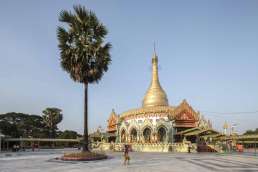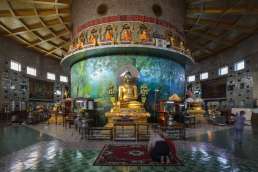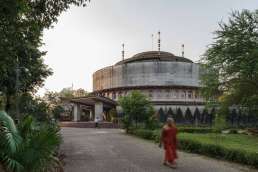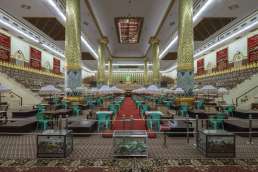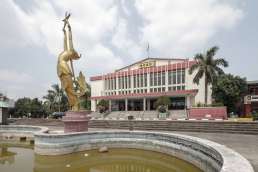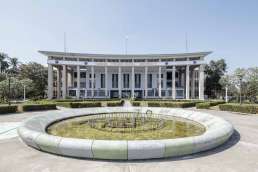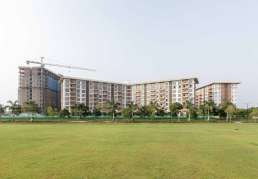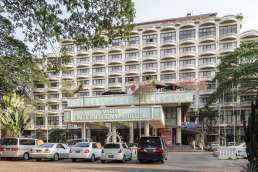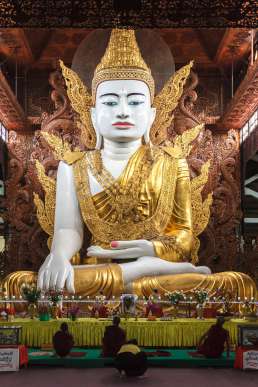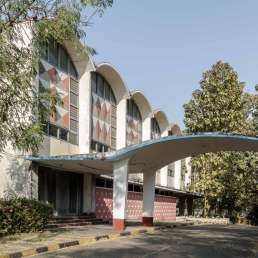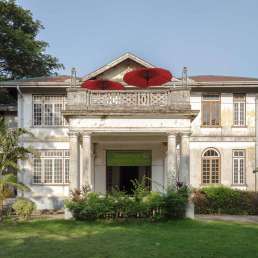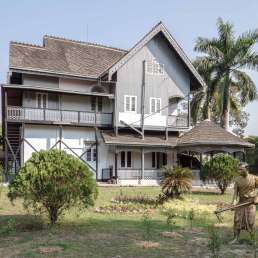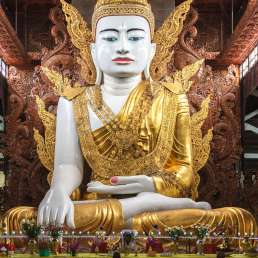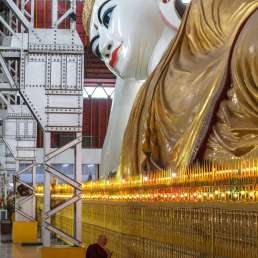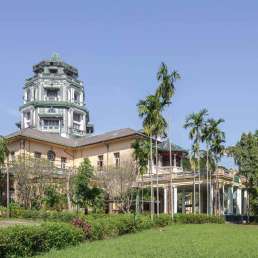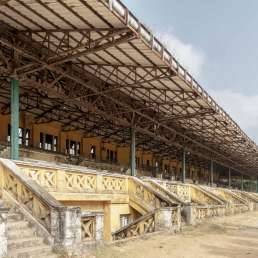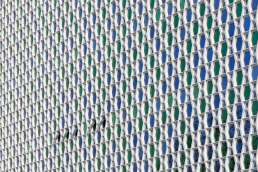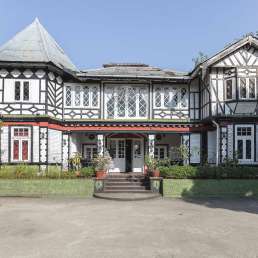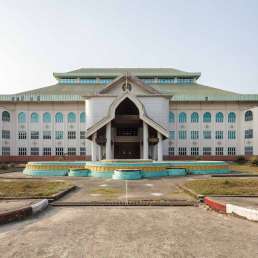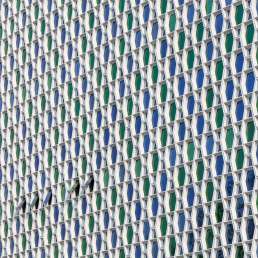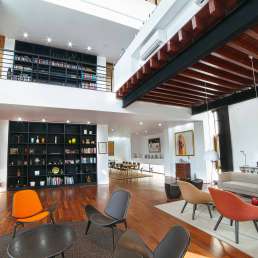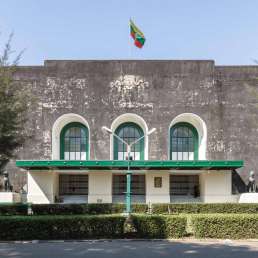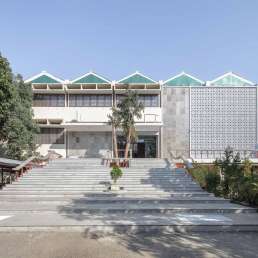Kaba Aye Complex
Address: Kaba Aye Pagoda Road
Year built: 1952-1961
Architect: Various
Burma’s first prime minister, U Nu, was a devout Buddhist. Buddhism was also an obvious tool of nation-building after independence since an estimated 90 per cent of the country is Buddhist. In this vein, one of U Nu’s abiding legacies was his convening of the Sixth Great Buddhist Synod. This council brought together 2,500 monastics from countries practising the Theravada branch of Buddhism, including Cambodia, Laos, Myanmar, Sri Lanka and Thailand, to review and recite the scriptures written in the ancient Pali language. The synod was convened for two years, between 1954 and 1956, its conclusion coinciding with the 2,500th anniversary of the last Buddha’s demise.
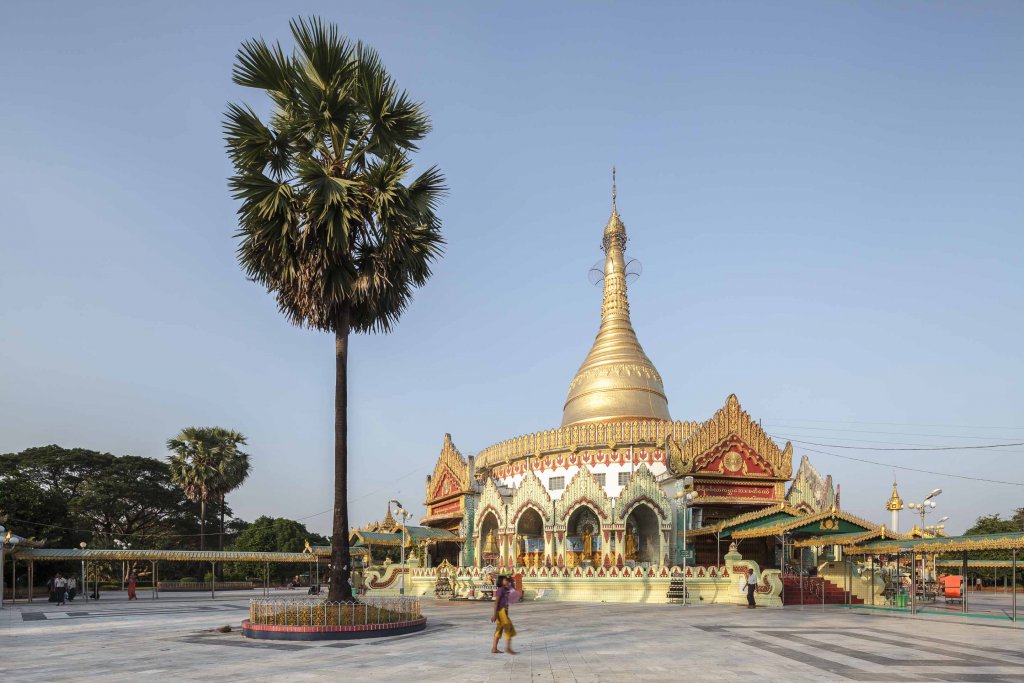
This sizeable religious compound was built for the synod. Centred around a massive man-made cave, it comprised a pagoda, a library, a hospital and hostels for the monastics. The hostels, immediately to the west of the cave, are still used by Myanmar’s most venerable monks.
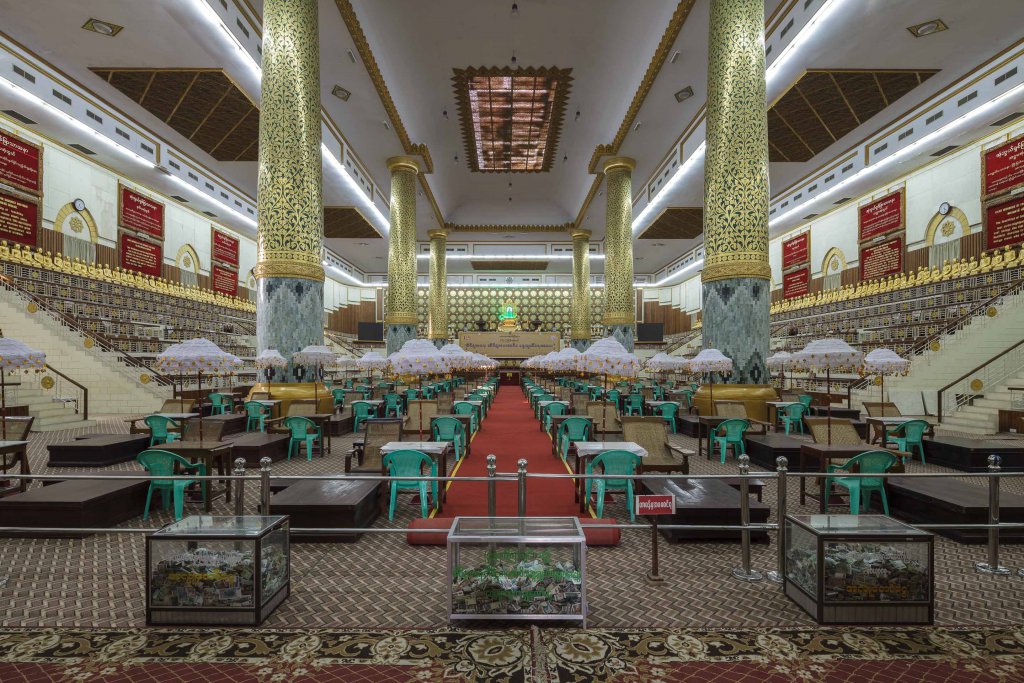
There was very little major construction taking place in the early independence period—a civil war was ravaging much of the country, even reaching the outskirts of Yangon, until it ebbed away in 1950. This makes the Kaba Aye complex’s scale all the more impressive. The Burmese parliament passed the relevant motion in 1951, stating that material improvements are “not sufficient to solve the problems of society and that measures for the spiritual and moral well-being of man could alone be effective”. Forty hectares of land were allocated to the project and 1 million pounds sterling, a stately sum for the cash-strapped country, were set aside for the construction. When the synod began in May 1954, 200,000 pilgrims gathered in the rain outside the cave to listen to the broadcast of the first day’s proceedings. Dignitaries from the participating countries sent their messages. Even two German-born monks attended the proceedings, perhaps the first non-Asians to do so in Buddhism’s long history.
Kaba Aye Pagoda (World Peace Pagoda)
Otherwise: World Peace Pagoda
Address: Kaba Aye Pagoda Road
Year built: 1952
Architect: Unknown
Of the buildings within the complex, the pagoda remains the most used today. Best begin your exploration here, as taxi drivers will have no problem finding it. Just like at the Shwedagon Pagoda, it is advisable to keep your shoes in a plastic bag and inside a backpack before entering the pagoda, as you will likely exit from another side if you venture elsewhere within the complex.

When built in 1952, the Kaba Aye stupa was a complete break from the past: worshippers were able to enter the hollow pagoda. Usually stupas were solid, with the relics buried underneath them, just like at the Shwedagon Pagoda. The Kaba Aye Pagoda’s innovation was made possible by modern construction techniques and supporting steel structures. The principle was later replicated at the Botataung Pagoda and the Maha Wizaya Pagoda. Even the Shwedagon Pagoda’s duplicate in Naypyidaw, the Uppatasanti Pagoda, is hollow. At the Kaba Aye Pagoda, the relics inside an inner chamber consist of the remains of two of the Buddha’s disciples. Before being brought to Burma, they lay in London’s Victoria and Albert Museum. The Kaba Aye Pagoda’s dimensions are rather modest: it is 34 metres high and has about the same diameter. Leave the pagoda towards the north to reach the Maha Pasana Guha.
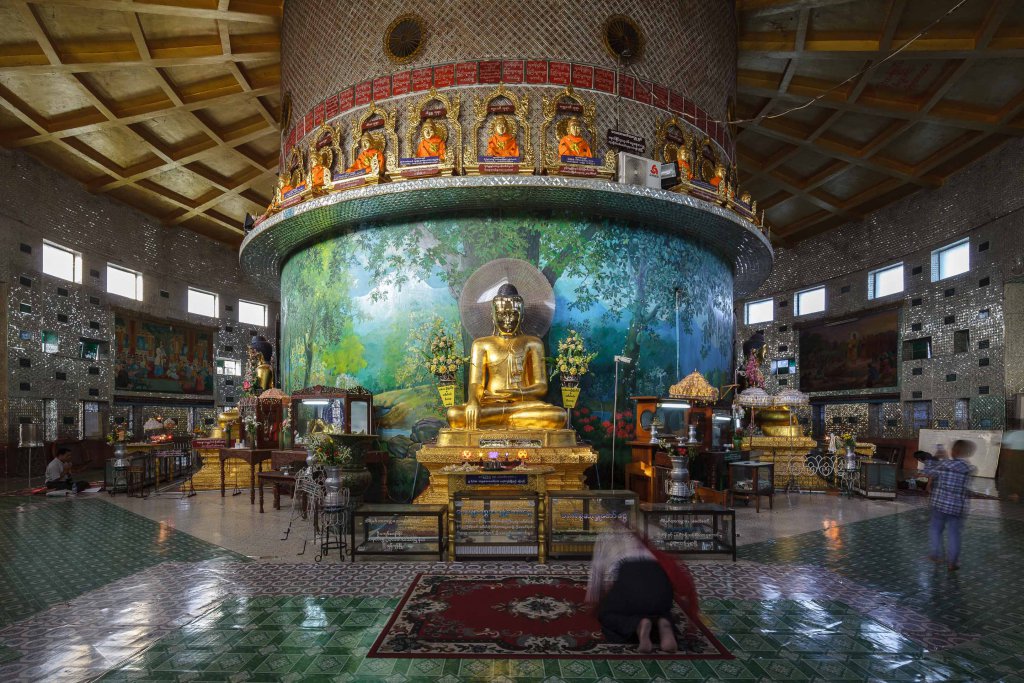
Pitaka Taik (Tripitaka Library)
Otherwise: Tripitaka Library
Address: Kaba Aye Pagoda Road
Year built: Circa 1956-1961
Architect: Benjamin Polk
Despite being part of the complex, few visitors venture far enough north to find the most interesting building of the whole complex, fenced in and looking somewhat out of bounds. In front of it is an oval pond and manicured, hilly landscape. The Burmese word “Pitaka” derives from the Pali “Tripitaka”, which translates as “Three Baskets” and denotes the canons of Buddhist scriptures. U Nu wanted a library that would store the Pali texts from the respective Theravada Buddhist countries alongside other religious writings that would emerge from the synod. For this, he commissioned an American architect.
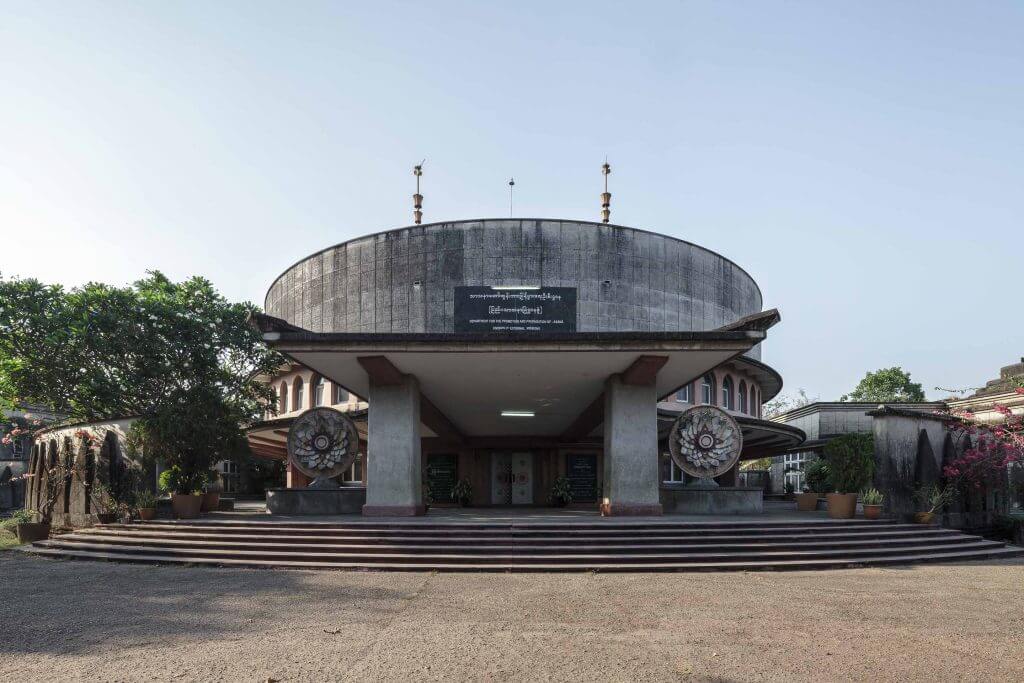
Benjamin Polk (1916–2001) had come to India in 1952 with his wife. He set up practice with fellow American Joseph Allen Stein (1912–2001) in New Delhi in 1955. (Stein had left the US due to the politically and culturally oppressive atmosphere of the McCarthy era.) The two men were later joined by Binoy Chatterjee and ran one of the largest architectural practices in Asia at the time. Together they built all over India. (Lodhi Road in New Delhi is sometimes referred to as “Steinabad” in recognition of the many buildings Stein designed there.) Polk also took assignments abroad, in Nepal for example, where he built the Royal Palace, and of course in post-independence Yangon.
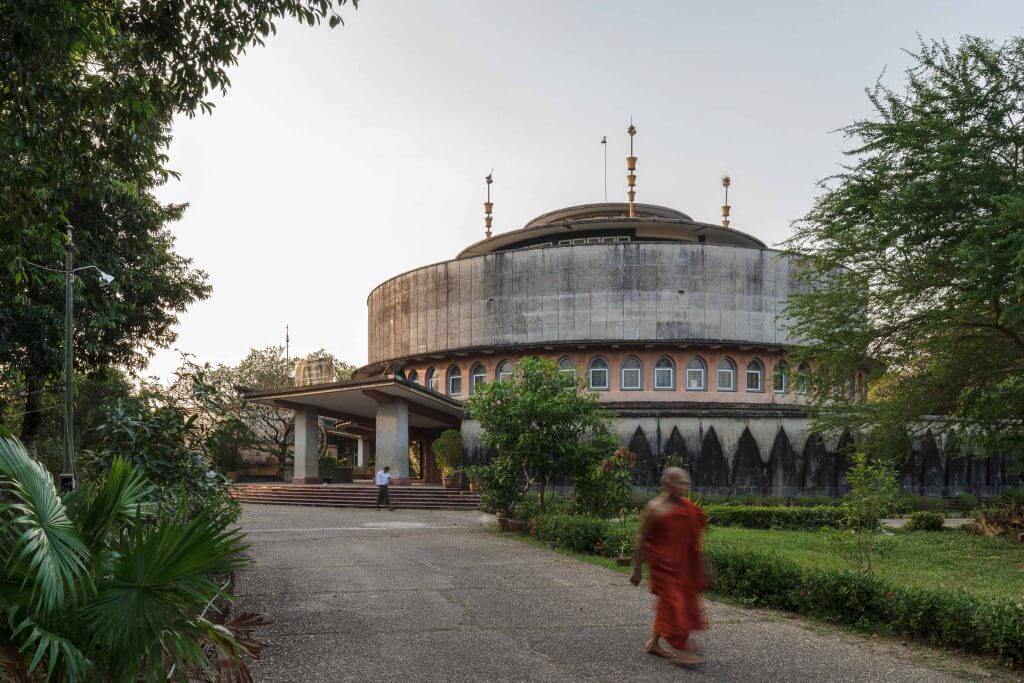
Prime Minister U Nu asked Polk to incorporate a number of highly symbolic elements and numbers into the library design. Note for example the radial design (which follows stupa architecture, above all that of the Sanchi Stupa in Madhya Pradesh, India), the building’s three storeys (after the Three Baskets of Wisdom, or Tripitaka) and the numerous lotuses. The building was to last 2,500 years, until the end of the next Buddhist epoch—quite a brief for a Modernist Western architect! But happily Polk was no dogmatist, so to speak, and proved highly sensitive to the structure’s religious and spiritual components. The material of choice was reinforced concrete. He found that the medium served the spirit of modern Burma and would allow for the building to become an heir to the architectural practices of ancient Bagan (formerly known as “Pagan”). As he explained:
“The traditional Burmese pointed arch from Pagan would now partake of the nature of reinforced concrete with its capacity to resist tension in bending. It would incorporate the structural continuity of reinforced concrete tank design, but cantilevered. Thus the interior arches of the Library could be bound in the central position of the building like the stamen and pistil forms of a flower. Here the uniformly pyramidal silhouettes of Pagan would be punctuated with the cantilever, partially hidden, but giving the weight of the building a dynamic upward and outward thrust behind the encircling walls. Perhaps there is something ‘primitive’ here.”
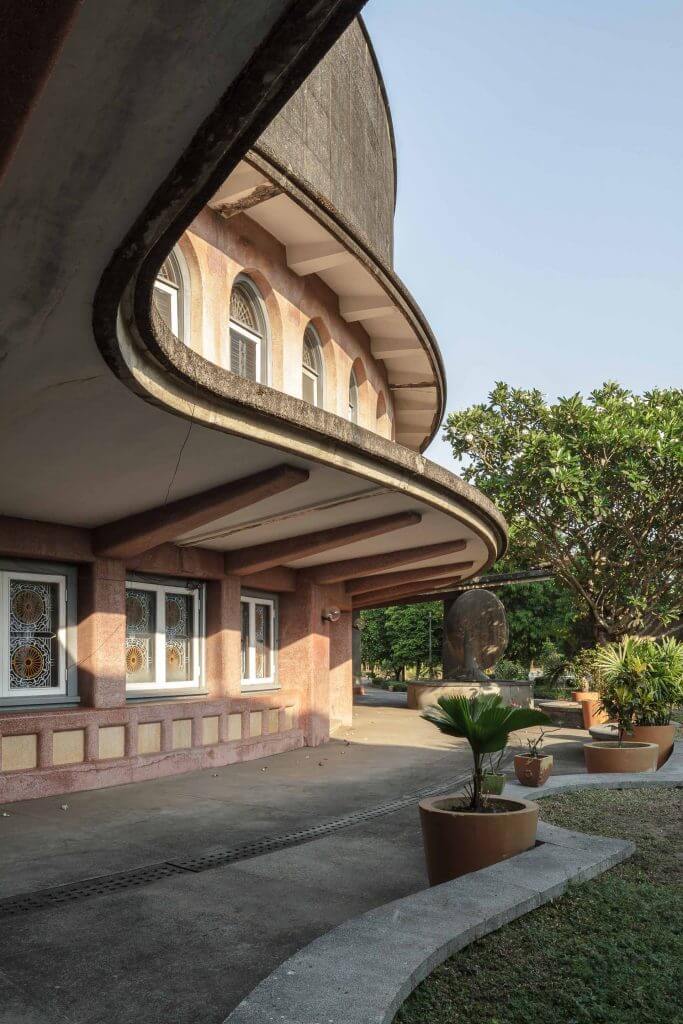
The library was designed with three wings, containing a public library, an auditorium and a religious museum respectively. The central core of the building would be reserved for scholars and monks of the institute, as a sanctuary for study and meditation. An Indian site manager named Visvanath Jhanjee oversaw the construction process. It was to take five years and ran into its own set of problems. An ethnic Chinese carpenter foreman was murdered. The first site engineer had to be removed from the job after he was found to have a drinking problem. The “political vicissitudes” of the times also plagued U Nu’s pet project, as Ne Win replaced him as prime minister between 1958 and 1960. We therefore date the start of the construction between 1955 or 1956 (the latter being the end of the Sixth Synod) and 1960 or 1961, by which time U Nu had won back this prime ministerial post. U Nu was also present at the inauguration ceremony and served the architects the first two dishes of its banquet. A Soviet publication at the time credits the library to both Polk and Stein, although Polk makes no mention of his partner’s involvement in Yangon.
This building is magical. With its bold architectural design, it conveys the bygone optimism of a young Buddhist nation.
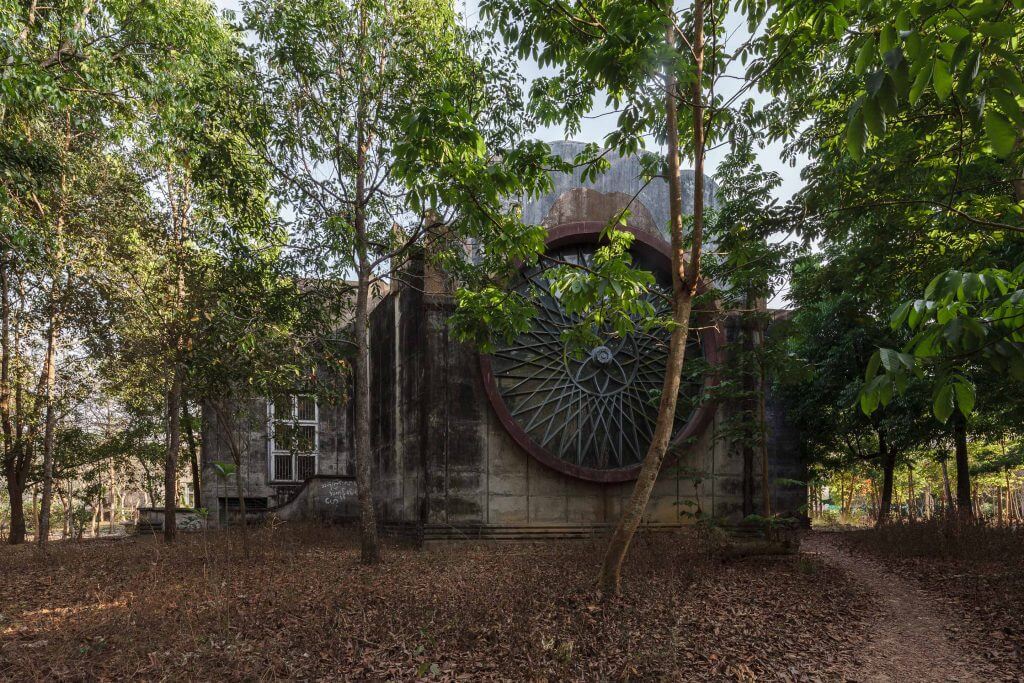
Maha Pasana Guha (Great Cave)
Otherwise: Great Cave
Address: Kaba Aye Pagoda Road
Year built: 1953-1954
Architect: Unknown
The convention of the synod was held here, a cave inside an artificially created rock. Its construction consumed 12,000 tons of cement and 380 tons of steel. The dimensions are equally impressive: the outside structure is 140 metres long and 110 metres wide. Inside, the assembly hall is 70 metres long and 40 metres wide. This created capacity for about 7,500 spectators to join the 2,500 monastics. Six entrances admitted people back then, signifying the Sixth Great Buddhist Synod. The cave was completed in 14 months, thanks in no small part to thousands of volunteer labourers.

Allegedly, U Nu was inspired to commission the cave as the centre of the synod following an earlier visit to the Satta Panni Cave in India, where the First Great Buddhist Synod was held the year after the Buddha’s passing. Today the cave is surrounded by trees. When the synod was held, however, it was almost entirely bare and its scale therefore easier to appreciate. The cave can be visited, the main entrance is on the southern side. It is still used for religious ceremonies. Given the precious little traffic around here, locals use the road surrounding the cave for their workout routines.
Nawaday Cinema
Address: Kaba Aye Pagoda Road
Year built: 1990
Architect: Unknown
Near the Kaba Aye Pagoda complex, the Nawaday Cinema is an arresting example of SLORC-era architecture for the entertainment industry. The contrast with the handful of cinemas downtown—from the colonial Waziya to the 1950s and 1960s-built cinema/hotel, the Thamada, for example—could not be starker.
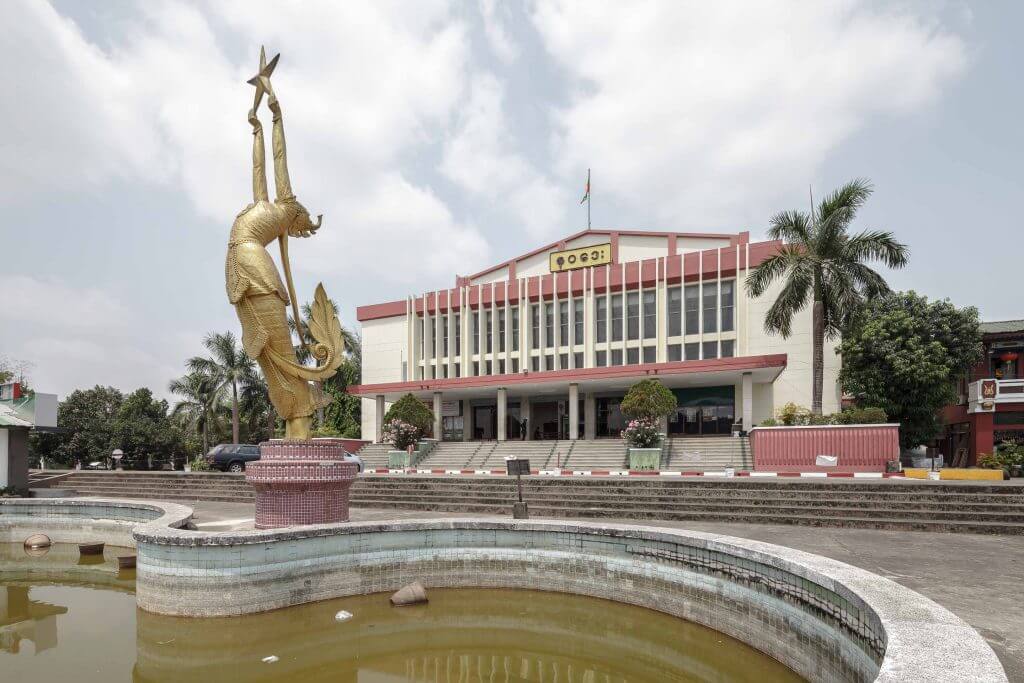
If the architectural feel of those theatres immediately evokes the colonial era, in the case of the Waziya; or the enterprising optimism of the 1950s for the Thamada, then the Nawaday Cinema’s isolated location, self-contained park, expansive dimensions and swaggering golden statue reflect an entirely different vision of the city and the built environment.
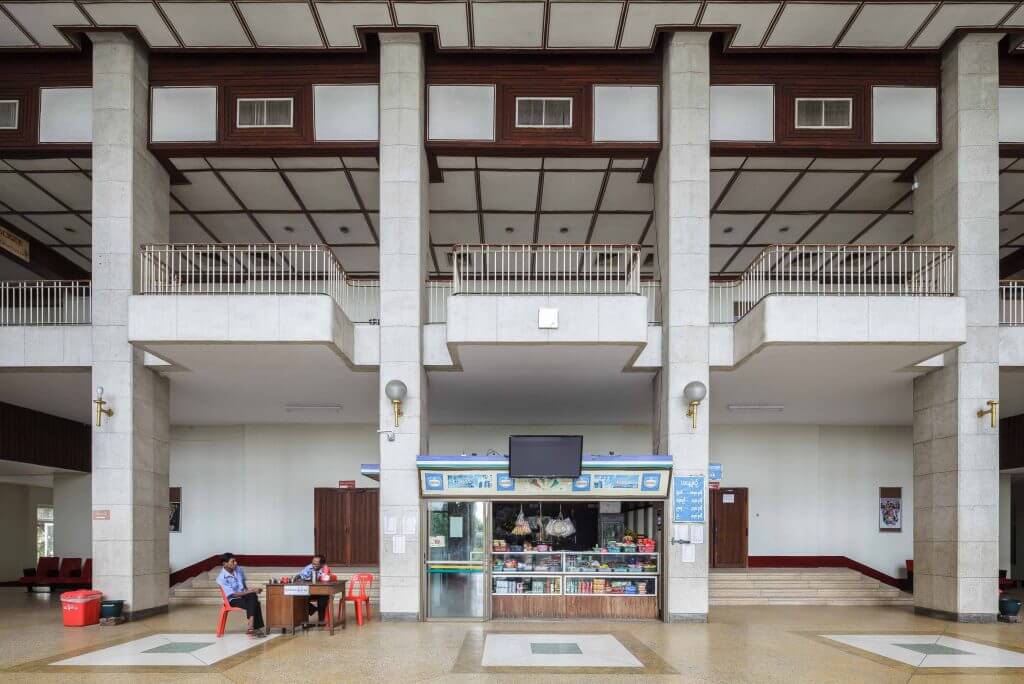
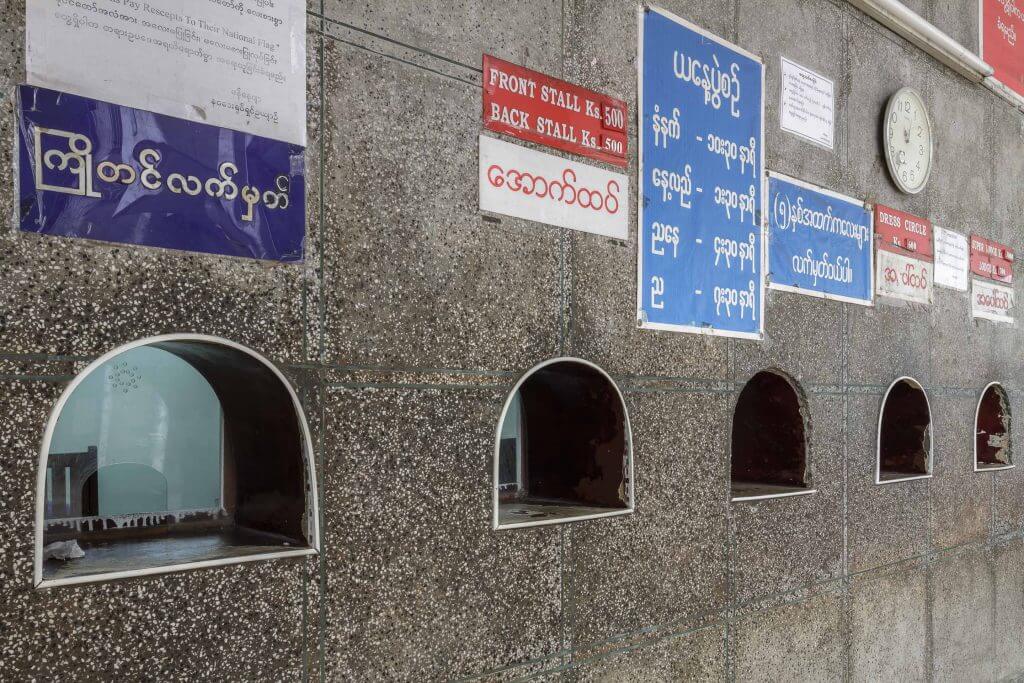
In that sense, the Nawaday Cinema was clearly a SLORC production. Its construction required the resettlement of more than 20,000 people that lived on the large complex, according to some sources. The cinema’s vast, rectilinear atrium and lobby would not look out of place in Naypyidaw. The trappings of government officialdom are clear in the grandiose statue out front too—a large replica of the Myanmar Academy Awards trophy. (On the other hand, the pediment crowning the building owes more to the city’s colonial heritage.) A private operator has been leasing the venue since 1997. A Chinese restaurant specialising in shark-fin soup also occupies the premises.
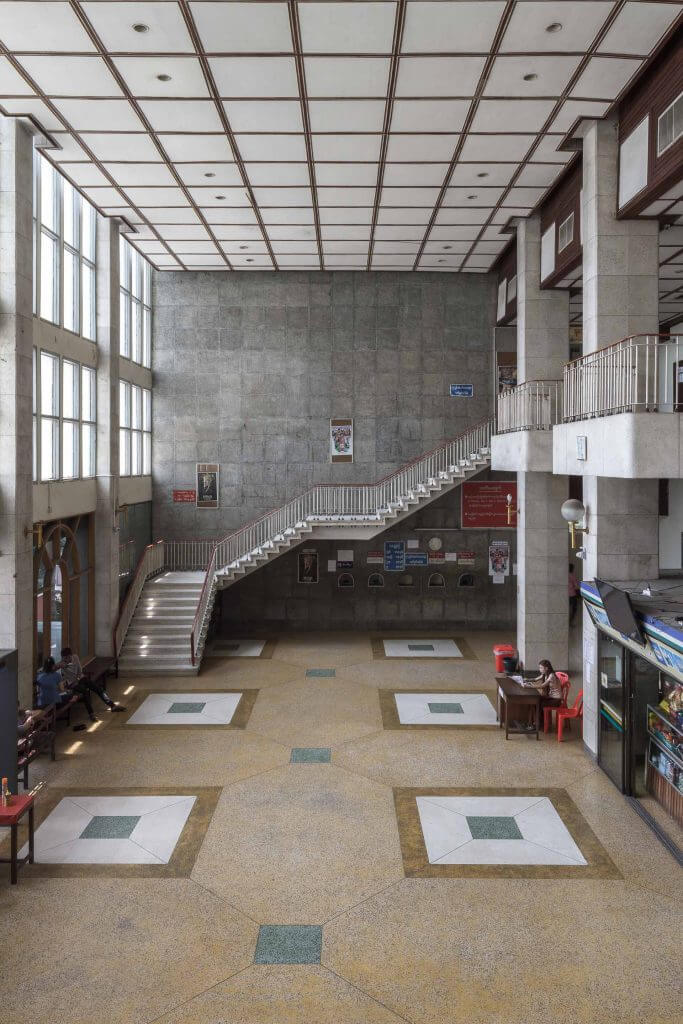
Yangon Technological University
Formerly: Rangoon Institute of Technology
Address: Insein Road
Year built: 1958-1961
Architect: Pavel Stenyushin
This major university campus was another gift from the Soviet Union. The Engineering College of Rangoon University moved here upon its completion in 1961. Prior to that, it was housed in the Engineering College, today’s University of Medicine-1 designed by Raglan Squire, which had only been finished a few years before in 1956. Interestingly, the biographies of both Squire (1912–2004) and the Soviet architect, Pavel Stenyushin (1904–1971), have significant parallels. Stenyushin and Squire were each involved in their countries’ reconstruction efforts after the Second World War. Squire planned the conversion of townhouses into apartments in London’s Belgravia, while Stenyushin worked for Mosarkhitektura and designed the city centre of Kursk, a Soviet city almost completely razed during the war. In Kursk, Stenyushin built two pompous buildings on the central Red Square, a hotel and the City Council; both have Neoclassical and more pure Stalinist architectural features. Before the war, Stenyushin also designed a massive “General’s House” on Moscow’s Leningrad Avenue. And just like Squire, he made a name for himself abroad. His Technological University in Yangon preceded later international assignments including the Polytechnic University in Kabul. Political systems and architectural styles divided these men, but their work took eerily parallel paths.
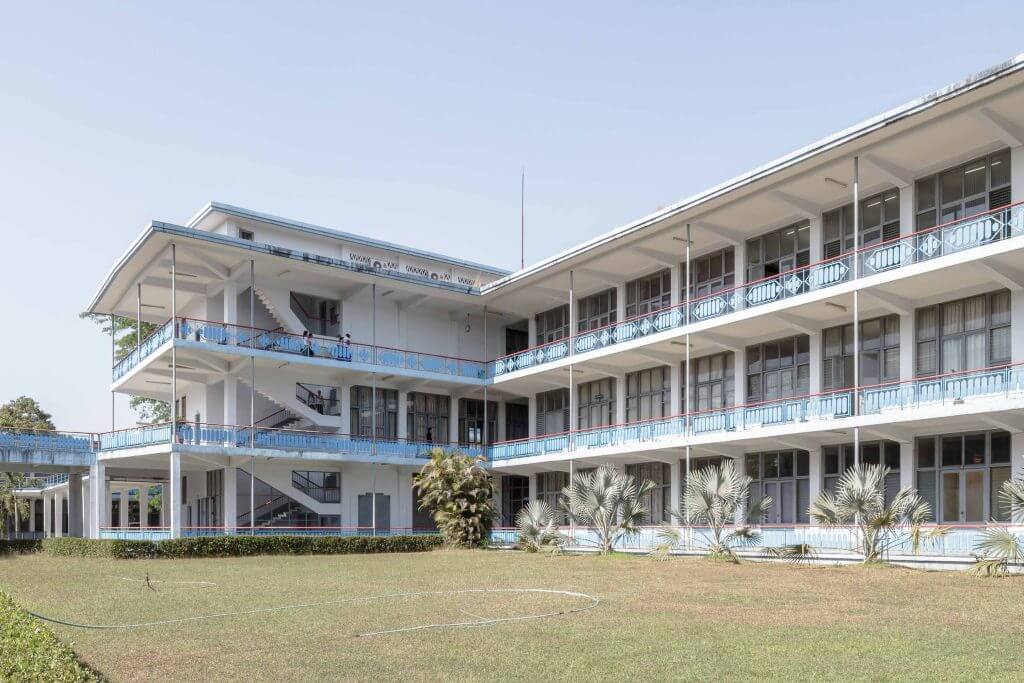
Both brought their aesthetics to Burma but had to adapt to local climatic realities. This led to some similarities in their work, for example the covered walkways and exterior-facing corridors. The main building of the Technological University features an imposing colonnade and large protruding roofs. This peculiar shape explains why some students called this the “university under the table”. Its slightly concave form harmonises with the circular plaza which it concludes towards the north, featuring a large water fountain at its centre. A series of courtyards and open staircases create an airy atmosphere inside the various buildings. Perforated walls perform a similar function. Plaques in Russian and Burmese are placed inside the central columns of the colonnade and commemorate the laying of the foundation stone by former Burmese President U Win Maung on 21 April 1958. Three years later, students moved to this location, rather far away from the centre. Some felt sentimental about the new setting. As one of them—U Myint Khine—recalls:
“On our first day, with renewed hope and vigour, and a feeling of great anticipation, I made my way through the huge, lofty columns of the main entrance. But, I must confess, in all honesty, that I felt a little bit disappointed. The architecture was, if anything, imposing. It was extremely functional, but to me, it was a bit too sterile.
The old Faculty of Engineering buildings we left behind were somewhat airy and light in comparison. The Burmese murals decorating the various façades were a joy to behold during our classroom breaks. The whole aspect was aesthetically very pleasing. All this flashed through my mind as I entered [Rangoon Institute of Technology], but I quickly put it out of my system. Whether pleasing in appearance or not, as I remarked before, it was still functional and solidly designed. If this is the ‘altar’ where I must gain my final ‘rites of passage’ into the world of Engineering, so be it. I will grow to love it and indeed I truly did in the end.”
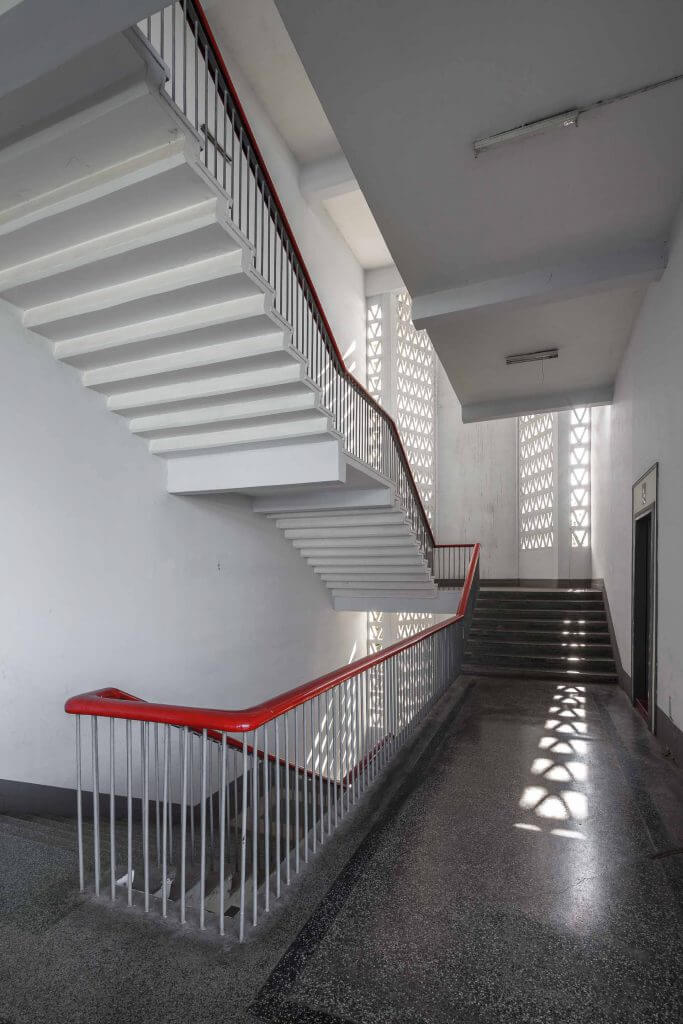
The Soviet Union was among the first countries to recognise independent Burma. But things got off to a rocky start as the Soviets backed communist anti-regime forces in their fight against the government in Yangon. Embassies in both countries only opened in 1951. By 1955, relations had warmed considerably. Prime Minister U Nu went on a two-week tour of the Soviet Union and Eastern Europe, signing trade deals and technical cooperation agreements. Burma pledged to support Soviet foreign policy, including backing Communist Chinese membership of the UN (at that time, Taiwan still represented China there). A high-level Soviet delegation visited Burma in 1955 and Rangoon’s population was told to line the streets and cheer the motorcade. It was during this visit that the agreement to build the Rangoon Institute of Technology was agreed in principle. Three years later, on Khrushchev’s next visit, it was officially presented as a gift of the Soviet people.
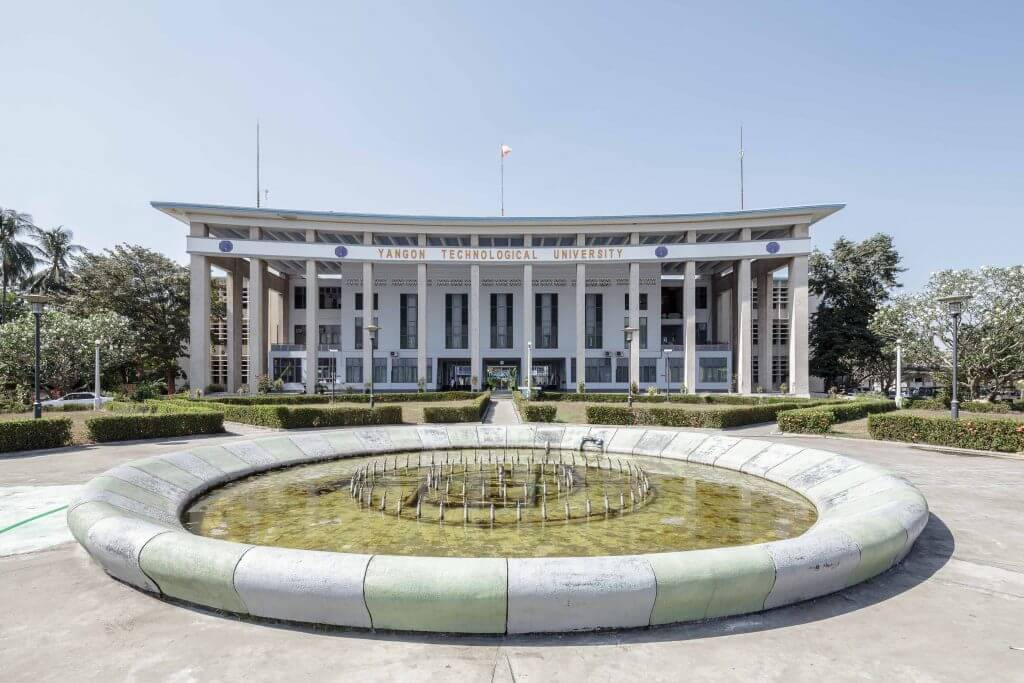
Burma’s embrace of the Soviet Union was pragmatic. It was finding it difficult to sell large quantities of surplus rice on the world markets, and the Soviet Union was an important buyer—although payment was often in kind. US intelligence was worried that “Communist trade, Communist experts and Communist-designed and erected buildings could be followed by Communist arms, Communist ideas, and ultimately, Communist control of this country”. When Ne Win took over power in a military coup in 1962, the socialist period of Burmese post-independence history dawned. But in its Ne Win vintage, this socialism took the country on an inward-looking and isolationist path.
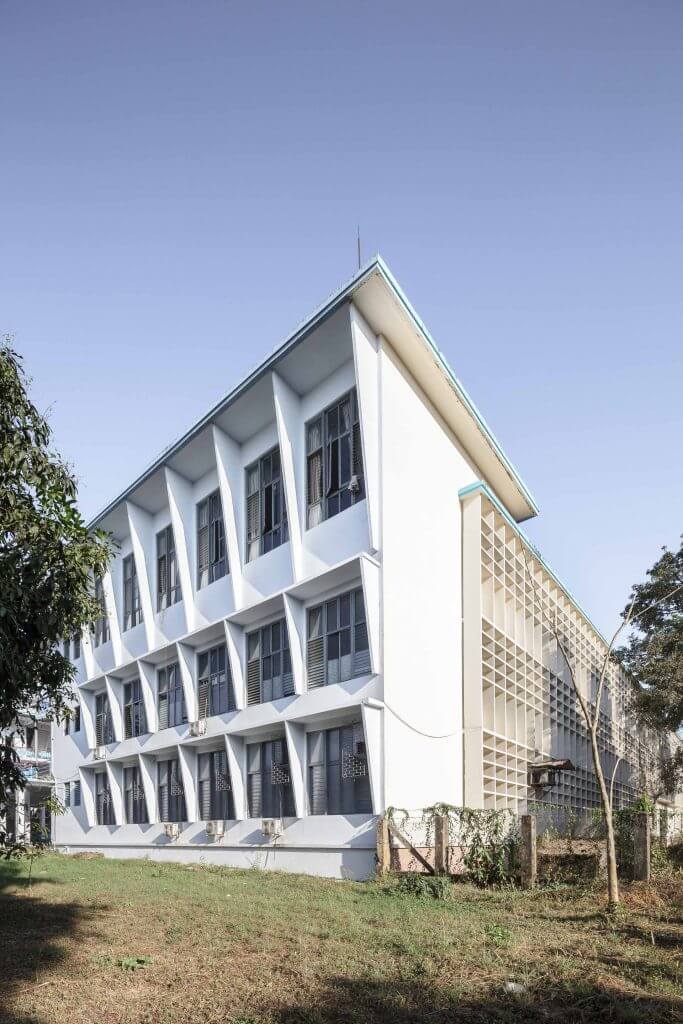
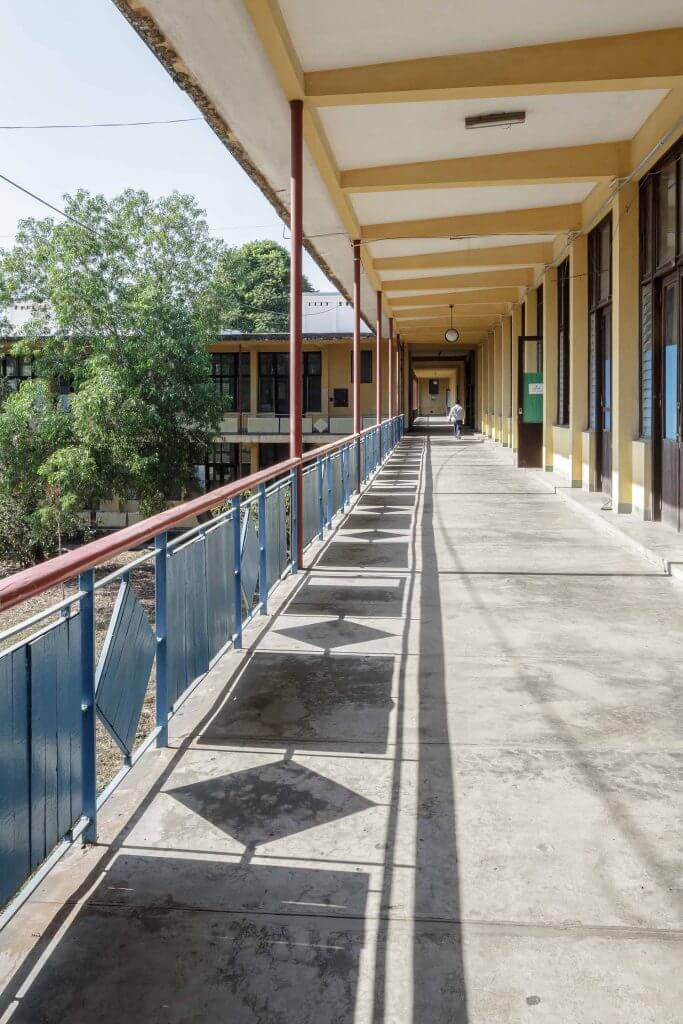
Star City
Address: Kyaik Khauk Pagoda Road
Year built: 2010-2016 (estimated for Zone B)
Architect: Dragages Singapore (contractors for Zone B)
Sitting on 170 hectares of land on the banks of the Bago River, this master-planned gated community is the most extensive residential project to date on Yangon’s real estate market. It stands in Yangon’s periphery, in Thanlyin, which is a town in its own right: it was only connected to Yangon in 1993, when a bridge across the Bago River was built. The deep sea port of Thilawa is just 15 kilometres to the south, placing Star City in a strategic position between Yangon’s centre and this new major special economic zone.
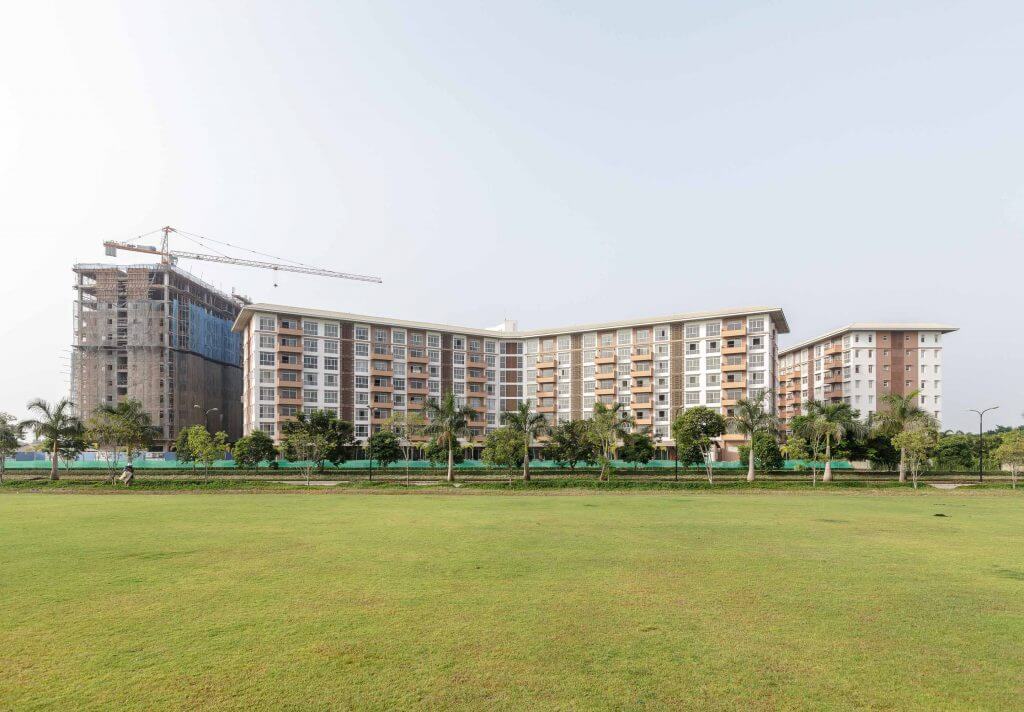
The development is split into several phases. The first one is now complete and largely occupied. Its five star-shaped residential blocks of eight to 12 storeys will each be complemented by an identical set of buildings to the west. A recreational complex will be placed between them. Zone B will open in 2016; it is being built by Singapore-based Dragages, a member of the French Bouygues construction group. Future phases may include more apartment blocks. Eventually, developers expect this area to be able to house more than 20,000 people.
The development’s architecture and layout is so generic it could be anywhere in the world. The buildings’ star-shaped layout and similar orientation means many units ended up facing one another, rather than offering views of the lake and river. The use of central hallways prevents cross-ventilation for most units.
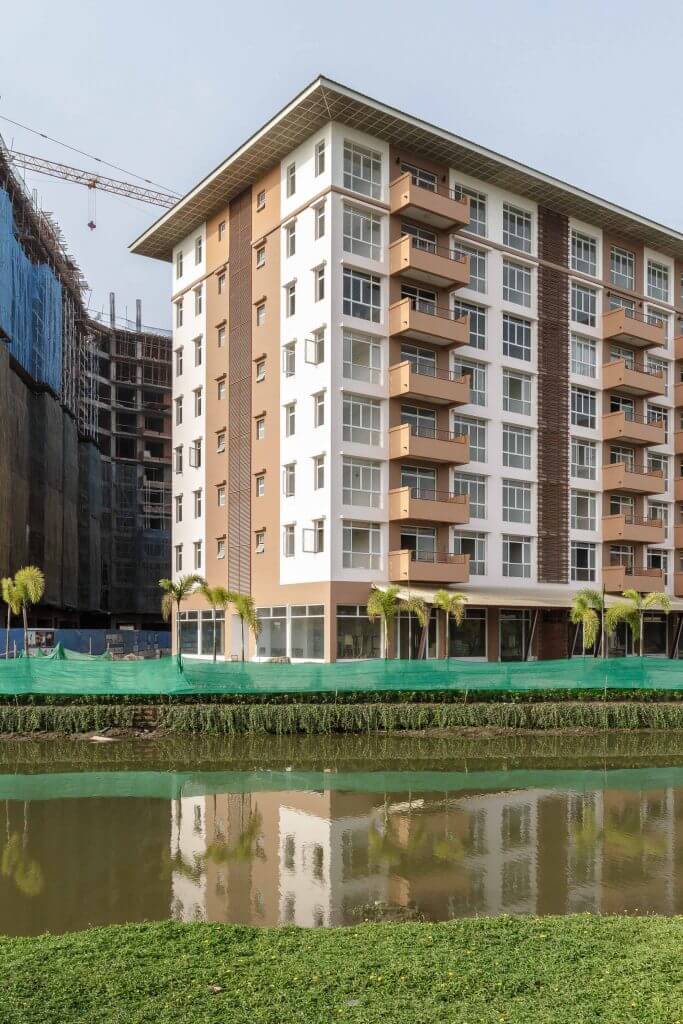
Despite these design shortcomings, the development is popular with the growing upper middle class. Construction quality is reportedly sound, and the apartments’ specifications are modern. A golf course partially surrounds the compound towards the undeveloped riverfront. Landscaped courtyards and tree-lined streets provide further greenery. Depending on their size and orientation, apartments sell from anywhere between 80,000 and 450,000 US dollars.
A ferry service will soon connect this site with central Yangon, reducing transit time. For now, the only road connection to Yangon is a two-lane highway that appears to be over capacity already. Despite the short distance, getting downtown can take up to one hour.
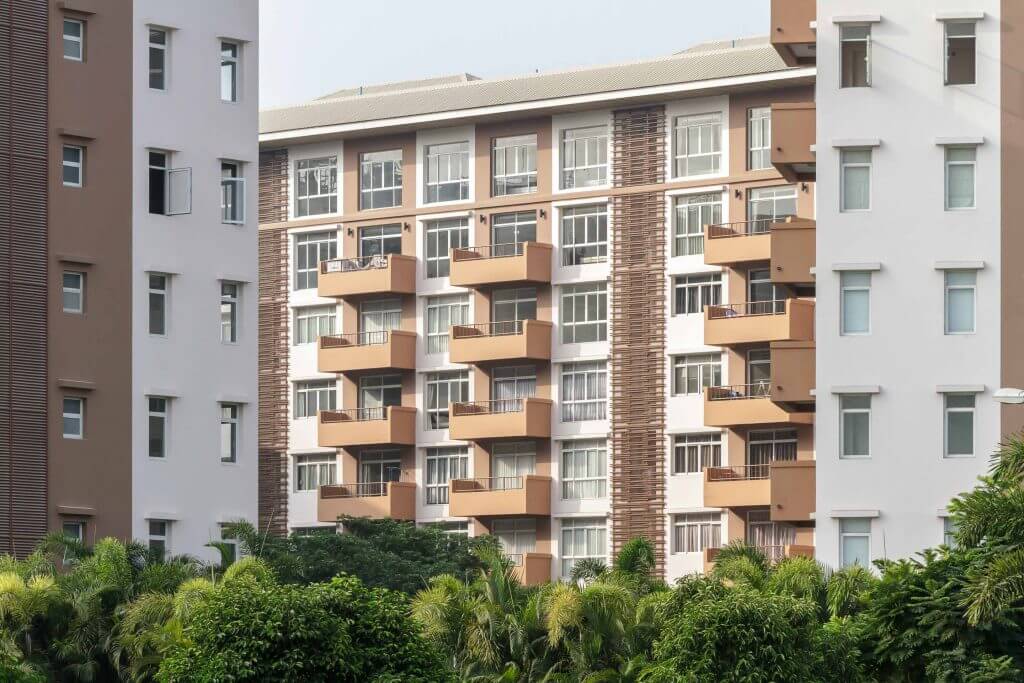
Given the breakneck speed at which Yangon is developing, Star City is visionary in several aspects. For one, it heralds the development of the river’s opposite bank. Thanlyin and Yangon’s Dala township are natural expansion areas for Yangon. A major new bridge is expected to connect the latter with the downtown area in several years, bringing relief to the more than 30,000 daily commuters, but also causing a real estate frenzy in Dala. (For the time being Dala still feels like a world apart from Yangon. It is a popular tourist destination for day-long motorbike rides through the countryside.) Star City also suggests Yangon’s wealthy will prefer to live in these gated communities, commuting to their jobs in the centre or in Thilawa, and requiring ever-greater infrastructure investments to accommodate the resulting flow of traffic.
Yangon International Hotel
Address: 330 Ahlone Road
Year built: 1990-1995
Architect: Unknown
The Yangon International Hotel’s construction started in 1990 and finished five years later. Its endless rows of rounded balconies wouldn’t look entirely out of place in Las Vegas.
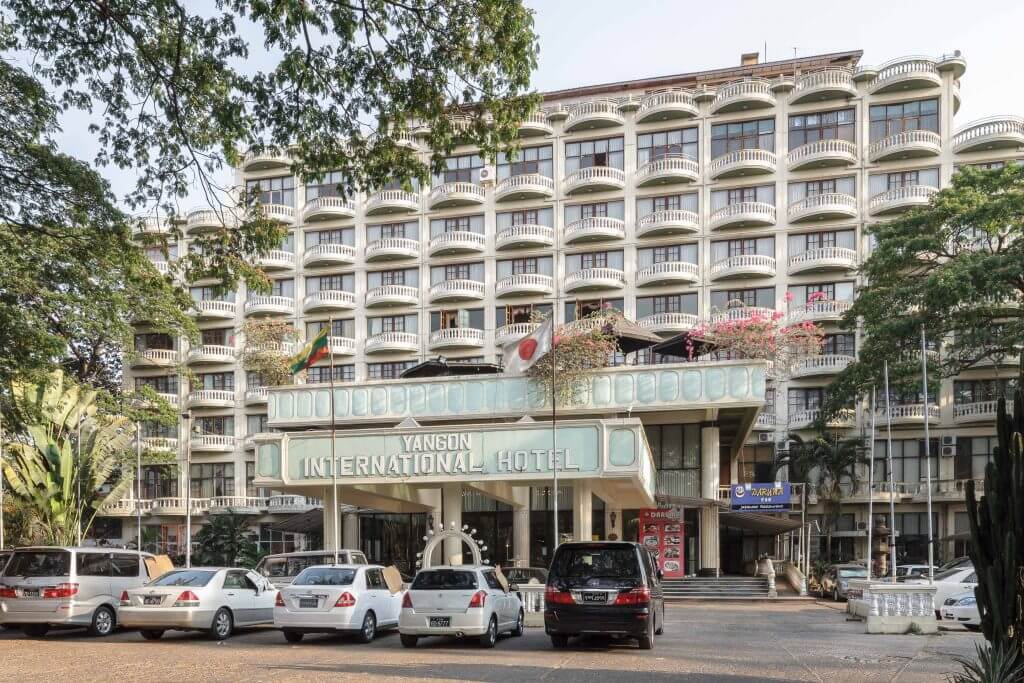
The Japanese Minatsu Construction Group initially planned a more ambitious project on this site, opposite the People’s Park. During the 1990s, several Japanese firms had their representative offices in this building, which explains the hot bath on the upper terrace, as well as the Japanese restaurant and the karaoke venue on the premises. The location may be the best thing about the hotel. An elevator ride to the ninth floor rewards the intrepid explorer with unhindered access to an airy but largely abandoned roof terrace overlooking this leafy part of Yangon, and affording good views of the Shwedagon Pagoda. The hotel management has begun building an almost identical-looking annex, set to open in 2016.
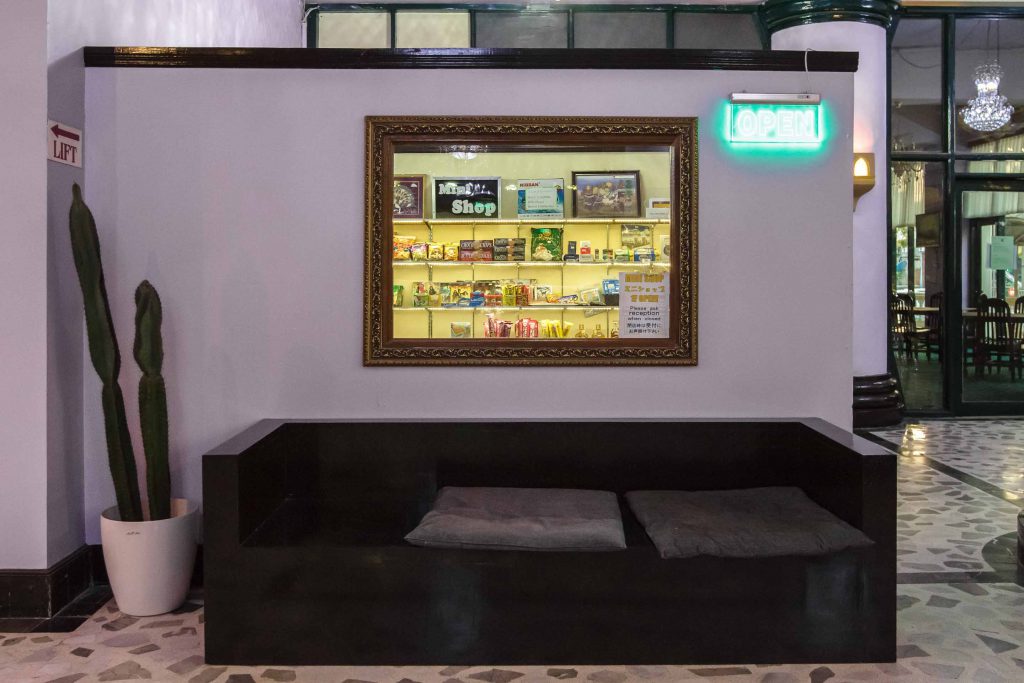
Bahan and Tamwe Townships
Lining the northern edge of Kandawgyi Lake, these townships host buildings in quieter surroundings — including several with a close connection to Myanmar’s post-colonial history, such as Aung San’s residence and the former AFPFL headquarters (today’s Goethe Institut).
Kamaryut Township
Home to Yangon University — which moulded generations of the country’s elite, and saw many of the episodes that shaped present-day Yangon — Kamaryut also encompasses long stretches of the inevitable Inya and Pyay Roads.
